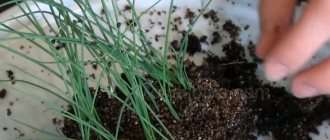- about the author
- Recent publications
More details
Pythia
Administrator at Pifiya.ru
Hello our dear reader! Today you are visiting Pythia. We invite you to immerse yourself in the study of the subtle world, the world of the unknown and unknowable, what in the concept of Don Juan is called the Nagual...
More details
Pythia recently published (see all)
- Knots of fate. Mystical story from life - 02/04/2021
- You are following your destiny... Mystical story - 02/02/2021
- Witch hands. Mystical story from life - 02/01/2021
Violet, or more correctly Saintpaulia, is one of the most popular indoor plants among gardeners. To grow the most capricious varieties of these delicate and noble flowers, it is very good to use the Lunar calendar for violets for 2021. In this article, we will tell you favorable days for planting and replanting violets based on the lunar phases and the presence of the Moon in certain zodiac signs.
The influence of moon phases on plants
- The new moon is the worst time for gardening work. Do not plant or replant anything. This unfavorable period lasts three days, the day before the new moon, the new moon and the day after.
- Growing Moon - The Moon grows itself and pulls up the energy and juices of plants. This is the best time to work with plants whose fruits ripen above the ground (greens, herbs, fruits, vegetables, flowers). You can plant, replant, graft, and so on.
- Full moon - during this period it is also not recommended for planting and replanting plants, but it lasts one day. You can do weeding, fertilizing, and treating the garden from pests.
- Waning Moon - juices and energy are directed down to the roots, so try to work with root vegetables, bulbous ones.
What does “first quarter” and “third quarter” mean in the Lunar calendar
After the new moon, the Moon begins to grow, its crescent appears in the sky and gradually increases in size. At some point in the lunar month, it turns out that exactly half of the lunar disk appears illuminated to us, and the other half is not visible. This phase of the synodic lunar month is called the first quarter.
In the third quarter or last quarter, we again see exactly half of the Moon, but this is already a waning, aging Moon. It's like a mirror image of the first quarter.
Is it possible to visually determine what phase the Moon is in, whether it is waxing or waning?
Yes, you can. It's very easy to do.
Look at the Moon and mentally place a pencil near its “horns”. If you get the correct letter “P”, it means the Moon is waxing, but if you get “P” on the contrary, something similar to the letter “U”, it means waning.
There are some more rules and recommendations that should be followed:
- It is best to plant plants at dawn or before lunch.
- When the Moon is waxing, use mineral supplements.
- When decreasing - organic.
See also: Planting calla lilies in 2021 according to the lunar calendar: favorable days
What plants can be planted on the waxing Moon?
The waxing moon is a favorable phase for the growth and reproduction of plants, the period of their most intensive growth.
During the waxing Moon phase, it is favorable to plant ground fruits, flowers, as well as medicinal and lawn herbs, fast-growing shrubs, vegetables, leaf crops, including roses.
During this period, it is good to sow the lawn and replant indoor flowers, plant garden flowers, and harvest.
What plants can be planted on the waning moon
During the waning Moon phase, it is recommended to care for plants, fight pests, sow and plant plants whose fruits ripen underground, various fruit bushes and trees.
Good for the waning moon:
- Plant trees and seedlings
- Cuttings from plants
- Divide perennials
- Trim and shape trees and shrubs
- Harvest for long-term storage
- Collect seeds
What can be planted during the new and full moon?
These days the earth freezes and does not give its energy to plants, so it is better not to plant anything these days.
On full moon days it is good to collect fruits (except for root vegetables)
You can care for plants during a Lunar Eclipse
On the days of lunar eclipses, it is better NOT to carry out any work with plants!!!
Lunar calendar for violets for 2021
Violet, or more correctly Saintpaulia, is one of the most popular indoor plants among gardeners.
To grow the most capricious varieties of these delicate and noble flowers, it is very good to use the Lunar calendar for violets for 2020.
In this article, we will tell you favorable days for planting and replanting violets based on the lunar phases and the presence of the Moon in certain zodiac signs.
Why does a violet grower need a Lunar calendar?
Until now, many flower growers treat the Lunar calendar of favorable days with a certain degree of leniency and even prejudice.
It seems to them that the rules that the Lunar calendar dictates for growing indoor plants are largely far-fetched and unnecessary.
Many people naively believe that a “light hand” is more important for flowers, and for a person who has such a gift, everything will grow and bloom by itself.
But such magic does not happen in real life. And if someone really has the gift of feeling at what time and how to plant a flower, then most likely these are people who are especially sensitive to the behavior of the Moon, who unconsciously use the lunar phases and therefore get excellent results.
But this is rather an exception to the rule, while for most gardeners the lunar calendar turns out to be an indispensable assistant.
What can knowledge of the Moon phases give?
1. The ability to choose the most favorable day for planting violets with seeds.
2. The ability to choose the most favorable day for transplanting and picking violets.
3. The ability to choose the most favorable day for propagating violets vegetatively, by cuttings.
Correct use of the lunar phase calendar, as well as the movement of the Moon in the zodiac circle, helps to achieve excellent results when cultivating violets, provided that other agrotechnical rules for growing these plants are observed.
Planting violet seeds according to the Lunar calendar
Violets reproduce in two ways. Vegetative, that is, the rooting of a violet leaf, or seeds. Violet seeds can be bought at any flower shop, and you should also purchase soil specially prepared for violet seedlings.
Any month, any time of year is suitable for planting violet seeds grown indoors. February - March are the best months for planting seeds of garden varieties of violets.
The technology for planting violets with seeds is simple - violet seeds are planted at a shallow depth in specially prepared soil, and the tray with the seeds is placed in a warm place. After two to three weeks, the violet seeds germinate. And somewhere else a week later, after the first true leaf appears, they are picked and replanted.
The influence of lunar phases on the germination of seeds and their subsequent growth is enormous and it is simply impossible not to take it into account when planting seed material.
If you sow seeds on the days of the waning Moon, their germination rate will be an order of magnitude lower than that of seeds sown on the days of the waxing Moon.
After all, it is the growing Moon that turns out to be the natural stimulant that is responsible for the accelerated growth of any plant, the growth of the aboveground part.
Therefore, sowing of any varieties of violets must be carried out on the waxing Moon. At the same time, it is important to take into account the influence of the zodiacal constellations in which the Moon will be on a given day, as well as the influence of the planets. The calendar of favorable lunar days is able to take into account all these factors.
Rooting violets
Propagation of violets vegetatively, by cuttings, differs fundamentally from propagation by seeds. In this case, we already have an adult, ready-made shoot of the plant, a leaf that needs to be rooted, that is, roots can be obtained from the existing cutting as quickly and successfully as possible.
Violets are one of those plants that are very easily propagated by cuttings and the leaves of violets quickly grow roots, especially if they are placed not in the ground, but in water. But this process is also very important to carry out under the appropriate phase of the Moon.
We wrote above that the growing Moon promotes the growth of the aboveground part of plants, that is, the leaf. But do we really need this when rooting violets? We need the opposite effect - acceleration of the growth of the root part of the plant. This means we must use the power of the waning Moon, which stimulates the growth of the root, underground part of any plant.
And again, when choosing the optimal day for rooting violets, you should take into account not only the lunar phase, but also the influence of other astrological factors. This has already been done when compiling a calendar of favorable dates, and therefore the violet grower only needs to take advantage of the work carried out by specialist astrologers.
Planting and replanting violets according to the Lunar calendar
Let us now touch upon the issue of planting or transplanting violets. Anyone who breeds violets, both from seeds and cuttings, is sure to encounter this.
It would seem that when replanting grown or rooted violets, we must first of all stimulate the development of their root system in order to speed up their adaptation in a new place. But this is a clear and common mistake.
In fact, when transplanting, the root system of violets already exists and there is no point in accelerating its development. It is much more important to simply not damage it during transplantation. But to stimulate the growth of the above-ground part of the plant, and its speedy flowering is extremely important. And the growing Moon can help with this.
Therefore, any work related to the transplantation of violets is carried out exclusively on the days of the moon’s growth. At the same time, we again do not forget about the possible negative influence of zodiac constellations.
This means that in this case, the violet grower cannot do without the Lunar calendar of favorable lunar dates, where all possible influences affecting plant growth have already been taken into account.
January 2020
- Planting violets - January 7 and 8;
- Rooting of violets - January 4, 5, 6;
- Transplanting violets - there are no favorable days;
- Feeding - January 1, 27 and 28;
- Pruning – January 11, 12, 20, 21;
- Pest control - (in the soil) - 13, 14, 22, 23 (on leaves) - 9, 17 and 18 January.
February 2020
Landing – February 3 and 4;
Rooting - February 1, 2, 28 and 29;
Transfer - no favorable days;
Feeding - February 5, 6, 7, 24;
Pest control - (in the soil) - 10, 11, 18, 19 (on leaves) - February 14 and 15.
March 2020
- Planting violets - March 2, 3, 29 and 30;
- Rooting of violets - March 8, 26, 27, 28;
- Transplanting violets - March 8;
- Feeding – March 4, 5, 31;
- Pest control – (in the soil) 17 and 18 – (on leaves) – March 12 and 13.
April 2020
Landing – April 7, 25 and 26;
Rooting – April 5, 6, 24;
Transfer – April 5 and 6;
Feeding - April 1, 27, 28 and 29;
Pest control - (in soil) April 13, 14 and 22.
May 2020
- Planting violets - May 4, 5, 23 and 24;
- Rooting of violets - May 2, 3, 29;
- Transplanting violets - May 2, 3, 6, 29;
- Feeding - May 6, 25 and 26;
- Pest control - (in soil) 10, 11, 20 and 21 May.
June 2020
Landing - June 1, 27, 28, 29;
Rooting – June 25 and 26;
Transfer – June 2, 3, 25, 26, 30;
Feeding - June 2, 3, 22, 30;
Pest control - (in the soil) 6, 7, 8, 16, 17 (on leaves) 11, 12, 13 June.
July 2020
- Planting violets - July 25 and 26;
- Rooting – July 23 and 24;
- Transfer – July 1, 4, 23, 24, 27, 28, 31;
- Feeding – July 1, 27, 28;
- Pest control (in the soil) 13 and 14 (on leaves) 16, 17, 18, 19 July.
August 2020
Landing – August 21 and 22;
Rooting – August 1, 20, 27, 28, 29;
Transfer – August 1, 20, 23, 24, 27, 28, 29;
Feeding - August 23 and 24;
Pest control - (in the soil) 10, 11, 18 (on leaves) 12, 13, 15, 16 August.
September 2020
- Planting violets - September 18;
- Rooting – September 24 and 25;
- Transfer – September 19, 20, 24, 25;
- Feeding - September 1, 19, 20, 28, 29 and 30;
- Pest control - (in the soil) 6, 7, 8 (on leaves) 11 and 12 September.
October 2020
Planting - no favorable days;
Rooting – October 21, 22 and 30;
Transfer – October 17, 18, 21, 22;
Feeding - October 17, 18, 25, 26 and 27;
Pest control - (in the soil) 3, 4, 13, 14 (on leaves) October 8 and 9.
November 2020
- Planting violets - November 29;
- Rooting of violets - November 1, 17, 18, 27, 28;
- Transfer – November 17 and 18;
- Feeding - November 22 and 23;
- Pest control - (in the soil) November 9 and 10 (on leaves) November 2, 3, 4, 5, 6, 13, 14.
December 2020
Landing – December 27 and 28;
Rooting – December 16, 24, 25, 26;
Transfer – December 16;
Feeding - December 19, 20, 21 and 29;
Pest control - (in the soil) 6, 7, 8 (on leaves) 2, 3, 11, 12 December.
https://www.youtube.com/watch?v=RGcicTjopR0
Let's summarize the above.
Violets are propagated by seeds or cuttings, and when propagated by seeds, sowing the seeds should be carried out on the waxing Moon, and when propagated by leaves, rooting of violets should be carried out on the waning Moon. Any transplantation of violets is best done during the growth of the Moon. The most favorable days in 2020 for any operations with violets are indicated in our Lunar calendar.
Source: https://piphia.ru/lunnyy-kalendar-dlya-fialok-na-god.html
When is a violet transplant necessary?
How to properly replant indoor violets at home? It is advisable to replant the plant twice a year:
- In spring;
- In autumn.
But transplanting homemade violets can be done at any time of the year, except winter.
Then the plant will be:
- Bloom profusely;
- Have a lush rosette of leaves.
There are indirect signs that determine the need for a transplant:
- White coating on the soil surface;
- The root system emerges from the hole in the pot to drain the water.
- The purchased violet can be transplanted into new soil.
Caring for violets in winter
In winter, it is quite difficult to please this heat-loving plant, which does not tolerate direct sunlight. It is necessary to position the pot so that the bush does not freeze. Northern and eastern window sills in a room with good heating are suitable for this (temperature +20. +25°C is suitable). If the crop is kept on western windows, then the afternoon and early evening sun must be shaded with curtains or a screen.
In December and January, watering should be reduced to a minimum. When the top layer of soil is completely dry, you can water the roots with clean water at room temperature. An interesting method of moistening the soil is to wrap flower pots in a damp cloth. Light watering through the stand and the bottom layer of soil is also possible.
Violets need moderate watering, but during the waxing moon it is necessary to increase the water level
It is not necessary to fertilize the bushes during winter dormancy. You can simply carefully monitor the temperature, moisten the soil in time and extend daylight hours. If the plant’s appearance shows that it is not comfortable, you can apply complex fertilizers containing nitrogen, phosphorus and potassium.
Proper care of violets using the lunar calendar will allow the plant to be in favorable conditions most of the time. Thanks to this, many varieties, including hanging ones, can bloom all year round, delighting their owners in return for their efforts in growing them.
Transfer time
For violets to take root better, spring is best. At this time of year, the plant has enough natural light, and the temperature for transplantation is optimal. As a result, Saintpaulia will tolerate a change of “place of residence” well.
September and October are also recommended for replanting capricious violets into new pots. In the summer heat, it is undesirable to touch the plant. At high temperatures, the transplant will cause him unnecessary stress. The same applies to the winter period. Due to a lack of sun and uncomfortable temperatures, the plant may not take root and die.
Optimal conditions for the transplantation procedure are ten hours of daylight and a temperature of +18 degrees. If you still need to replant Saintpaulia in winter, you need to install special lamps for additional lighting and ensure the required level of humidity in the room.
Beginning flower growers often ask whether it is possible to replant a blooming violet. Transplanting Saintpaulia during flowering is resorted to only in emergency cases.
If a plant is exposed to a disease or is attacked by pests, it must be replanted immediately, regardless of flowering or time of year. The violet is also replanted if it is too flooded, which can cause the roots to rot.
Important! After transplantation, flowers or buds should be removed so that the plant directs all its energy to rooting and not to flowering.
Under normal conditions, the flower is not touched during the budding period. Flowering indicates the plant is in good health. Since it blooms, it has enough nutrients. Therefore, replanting can be delayed until flowering is complete.
Some gardeners rely on the lunar calendar for transplanting violets. It indicates favorable periods for planting, down to the day.
Folk signs for February 2
In the folk calendar, this day is marked with a number of signs:
- What a day, so is Maslenitsa.
- There will be a snowstorm on Makaria (February 1) and on Efimiya - there will be a snowstorm all over Maslyana.
- A broom on Maslyana means she will come with a snowstorm.
- Sun - for a red spring, cloudy - for prolonged snowstorms, windy - for a wet year.
- Frost on this day promises autumn night frosts.
- If a snowstorm starts, it will last the whole week.
- On Efimyev's day the sun is at noon - spring will be early.
- The blizzard foretells a cold spring with frequent snowstorms.
- On this day, losing a mitten or glove means poverty, injuring your hand means illness of a loved one.
- On February 2, you cannot pick up small change from the ground, otherwise you will live in poverty for three years. There is also no need to sing after sunset, otherwise tears cannot be avoided.
People born on February 2 are very restless by nature, “as if obsessed with care.” They wait for amazing events all their lives. It is believed that they rarely live to old age. In the old days, midwives who delivered babies on February 2 carried the umbilical cord of the newborn into a hollow tree and said: “The bird will build a nest here, and the servant of God (name) will live a hundred years.” Sapphire and jasper are suitable as a talisman for people born on February 2.
If the birthday person of the day could not calm down, he did not give rest to himself or others, the healers gave him the charmed water to drink.
See also: who
See also: who is interested in weekends and holidays 2019 (calendar)
Transplanting violets after purchase
After purchasing a violet, you need to carefully inspect it, remove dried buds, flower stalks and leaves. Store-bought flower pots usually contain a peat mixture that contains no nutrients. Therefore, after purchasing the plant, it should be replanted as soon as possible.
To do this, prepare a new substrate by mixing high-moor peat with vermiculite. This mixture will be moderately sour and loose. If you wish, you can purchase ready-made soil for violets in the store.
After transplantation, the plant is covered with film to obtain a greenhouse effect. After 7 – 10 days, the film can be removed.
See also: When to replant lilies in 2021: timing, favorable days according to the lunar calendar
If the flower was purchased not in a store, but from familiar flower growers, you don’t have to rush to change the pot. In this case, the young plant is not immediately replanted, giving it time to develop the root system.
Favorable and unfavorable days for planting flowers in January 2021
| View | Favorable days | Unfavorable and prohibited |
| Annuals | 7-9, 16-17, 23-27, 30-31 | 12, 13, 28, 29 |
| Perennial, biennial | 18-20, 23-27, 30, 31 | |
| Corms for forcing | 3-7, 16-17, 20-25, 30-31 | |
| Ampelous and curly | 3, 4, 9, 10, 23-25, 30, 31 | |
| Indoor | 3-7, 16-18, 20-27, 30, 31 |
How often to replant
In flowering perennials, the root system develops quickly. The plant quickly draws all the nutrients from the soil, and it becomes depleted. The roots begin to peek out of the drainage holes or above the ground. The violet needs to be replanted at least once every 7–8 months.
Timely transplantation of Saintpaulia into a new pot will help prevent diseases, and the violet itself will delight with beautiful flowering.
How to choose a pot
Shallow pots are chosen for relocating Saintpaulias, since the roots of these flowers develop from the bottom up. A height of 10 cm and a diameter of 9 cm will be sufficient. If the plant is planted in a larger pot, it will intensively develop roots and entangle the earthen ball, and there will be no strength left for flowering.
A pot made of clay or plastic is suitable for violets. A clay pot provides good air permeability and maintains soil moisture at the roots. In such a pot, the plant is less likely to get sick and be attacked by pests. The downside of these pots is that they are heavy and not cheap.
A plastic flower pot is lightweight and easy to care for. Its disadvantage is poor air circulation. To fix this, holes are made with a nail in the bottom and side walls.
Priming
To independently prepare soil that is best suited for violets, you will need the following components in equal parts:
- two parts of leaf soil;
- part of coniferous soil;
- part of the peat;
- part of the turf land;
- some river sand;
- a handful of charcoal.
Advice! For better results, vermicompost can be added to the soil 2 weeks before transplanting.
The prepared substrate must be disinfected. To do this, it is steamed in the oven or doused with boiling water. After the soil has cooled, you can begin replanting the Saintpaulias.
Preparing the plant
Before transplanting a violet, it should be prepared for the procedure. The soil in the pot is moistened so as not to damage the roots of the plant. There is no need to fill the pot with water until dirt forms; the substrate should remain loose.
The violet is carefully removed from the old flowerpot, trying not to stain the leaves. Some of the root shoots are cut off and large leaves are removed. These manipulations activate the rejuvenation of the flower.
Algorithm for replanting violets at home
Proper transplantation of Saintpaulias is the key to lush flowering and normal plant life. Let's consider the algorithm of actions when replanting violets at home:
- It is first necessary to prepare flowerpots, soil mixtures, drainage material, and the violets themselves that require replanting for the procedure.
- A small layer of drainage is placed at the bottom of the flowerpot and then covered with soil.
- Remove the violet from the old flowerpot by lightly pulling the base of the stem near the soil.
- Carry out a thorough inspection of the lower leaves of the plant, removing their lower tier, as well as wilted and damaged leaves.
- Carefully shake off the old soil from the roots, being careful not to damage them.
Transplantation process - Inspect all the roots of the violet, removing dead ones and shortening those that are too long.
- The rosette with violet is placed strictly in the center of the flowerpot, the rhizomes are straightened and soil is gradually added, lightly tapping the flowerpot to distribute the mixture evenly. The lower tier of flower leaves should be located 1 cm from the upper rim of the flowerpot.
- Water the plants. If after watering the soil shrinks a little, you need to add a new mixture. You should ensure that the soil in the pot is gently compacted, which will help prevent the formation of air voids between the roots of the plant.
Choosing soil and pot
Before replanting Saintpaulia, special attention should be paid to the choice of substrate and flowerpot.
Plastic flowerpots are more preferable for violets than ceramic or other materials. You can easily free the flower from such a pot before replanting. In addition, they are easy to clean and lightweight. The volume of the new container should be 3 times larger than the bush being replanted and not exceed a height of 10 cm, the circumference of the upper part should be no more than 15-20 cm. Such a flowerpot is preferable for planting adult individuals.
For “children” you can use small cups with a diameter of 6-8 cm.
Once the container of the cup is filled with roots, it should be transplanted into a new container, having first filled the bottom with a layer of drainage that can compensate for the planting depth.
To ensure better watering and delivery of nutrients to the root system of the plant, it is recommended to first insert a wick made of cotton threads into the flowerpot. Then the soil will moisten faster.
It should be remembered that only after the pot is completely filled with roots will the transplanted violet begin to bloom.
For Saintpaulias, choose light, slightly acidic soil, which contains: 5 parts chernozem, 3 parts peat, mixed with one part coarse river sand. It is recommended to add sphagnum moss, vermiculite, crushed charcoal, coconut fiber, and brick chips to this soil mixture. It should be remembered that the volume of additives should not exceed the amount of river sand. Expanded clay, moss and shards of clay flowerpots are well suited as drainage materials.
If such a soil mixture is prepared independently, it must be steamed and disinfected with potassium permanganate so as not to expose the plant to the risk of any diseases. The most suitable option is to buy a ready-made substrate for Saintpaulia in a specialized store, then the risk of infection of the flower is minimized.
Replanting with complete soil replacement
The most popular way to replant Saintpaulias at home is to completely replace the soil mixture. This method is most suitable for transplanting adult flowers with a developed root system, when the roots have completely entwined the earthen ball and come out of the drainage holes, as well as during rejuvenation.
When carrying out this procedure, the roots are thoroughly and completely freed from the old soil by lightly shaking the plant. The longest and overgrown roots are shortened by 2/3 using disinfected tools. All resulting sections are treated with crushed charcoal.
If rotting of the rhizomes is detected as a result of acidification of the soil, the roots must be washed under running water. After which the roots are treated with perlite and planted in new soil.
After this method of transplantation, it is recommended to place the flower pot in a greenhouse for several weeks to speed up the establishment.
Partial replacement of the substrate in the pot
This type of transplantation is most often practiced for young animals. To do this, the plant is removed from the old flowerpot, the old drainage material, excess crumbling soil, including the top layer not filled with rhizomes, are removed. In this case, it is possible to remove almost half of the old soil mixture.
The free space in the flowerpot is filled with new soil, watering is carried out so that the soil “settles down”. If necessary, add more soil.
Transshipment
The simplest and most popular way of replanting violets is transshipment, which consists of removing the plant from the old flowerpot along with a lump of earth and placing it in a larger flowerpot with further adding new soil substrate. This option for replanting violets is suitable for young plants, which quickly fill the planting container with roots.
Since during transshipment the roots are not cleared of old soil, this method is only suitable for healthy plants whose root system is in ideal condition.
Transplant methods
Depending on the purpose or reason for the procedure, there are three methods, each of which has its own advantages.
Complete substrate replacement
This type of plant replanting is resorted to when the violet stops growing and developing, does not bloom and looks unhealthy. This is a signal that the plant has used all the microelements and the depleted soil can no longer nourish it.
Complete removal of old soil involves cleansing the root system. It is inspected and dried, rotten and damaged parts are removed. As a result, the root part is significantly reduced, and the plant can be planted in a pot of smaller diameter.
Expanded clay is scattered on the bottom as the first layer. Then a small amount of soil is poured on which the violet is laid out, carefully straightening its roots. Next, fill the remaining soil until it comes into contact with the lower leaves. The soil is mulched with vermiculite.
To check whether the soil is well compacted, shake the pot with the plant. If the violet does not sit tightly and sways, you should compact the soil again with a pencil.
To maintain soil moisture for the first day, the plant can be covered with plastic film.
Partial soil replacement
Partial replacement is carried out every time a healthy plant needs to increase the pot. To do this, part of the soil is removed, but the earthen ball around the roots is not touched.
The violet is removed from an old pot in which the soil has been previously moistened. Having transplanted it into a large pot, add the prepared nutrient mixture and tamp it down with a teaspoon.
Transshipment
Transshipment is used when it is necessary to urgently relocate a flowering plant or replace a container that has become cramped with a more spacious one.
The violet is carefully removed from the container along with the earthen lump. Drainage and part of the prepared soil are poured into the new pot. Then the used container is inserted, and the space around it is filled with soil. After this, the unnecessary pot is removed and a flower is placed in its place. All that remains is to carefully level and compact the earth.
How to seat children
It is important to know how to plant young shoots so that they take root. Young rosettes are distributed into pots with a diameter of 6 cm after two pairs of leaves have appeared on them. To prepare the soil, use vermiculite, peat and chopped sphagnum.
The babies are separated from the mother's rosette along with a large leaf. Then they are seated in separate containers at a shallow depth. The soil is moistened, and before rooting, containers with young plants are placed under a lamp.
See also: Favorable days for planting pelargonium in 2021 according to the lunar calendar
Tips and tricks for caring for and growing indoor plants in February 2021
The end of winter is important for restoring proper care for plants and flowers. Flower growers can return foliar and root feeding, retain moisture by loosening, and take care of irrigation with warm water.
If necessary, you can transfer it to a larger container or replant it with treatment of the roots against pests and diseases. For accelerated rehabilitation, it is recommended to use artificial lighting and a heated mat.
Watering
There is no need to increase watering. Moisture should be added as the top layer of soil dries. In order for the plants to gradually wake up at the beginning of spring, February is the ideal time for fertilizing and irrigation with cool water. When living in an apartment, dry air should be eliminated using a humidifier. 30 minutes in the evening and morning will allow the flowers to feel better in just a few weeks.
If there is concern about overwatering the soil, it is worth adding a smaller volume of water, maintaining the regularity of watering at the same level. Signs of overwatering are usually: yellowing and drying of the upper leaves, the formation of spots and black tips, lack of shine, and the appearance of growths on the back of the leaf.
To ensure that the soil dries out gradually, the top layer should be loosened before watering. Manipulation will help reduce water application to a minimum.
Additional lighting
Unfortunately, February does not allow plants to fully develop due to limited daylight hours. For 28 days, the flowers are dormant and do not grow new leaves or peduncles. The problem can be corrected by using backlighting. Phyto-lamps extend daylight hours to 10-12 hours, promoting the awakening and growth of a lush crown.
If necessary, it is allowed to combine the lamp with a warm rug. This combination promotes accelerated rehabilitation 3-5 days after transshipment or transplantation, changing the pot or soil.
Plants always feel loved. If you carry out care with attention and care, devoting a sufficient amount of time, the inhabitants of the windowsill will look chic. In addition to the shiny leaves, the flower stalks will quickly set, delighting their owner with abundant bouquet blooms.
Pruning indoor plants at the end of winter
Subtropical plants (bougainvillea, feijoa, oleander) with a lack of light stretch out and lose their foliage. To give them a compact shape and stimulate the growth of new shoots, they should be radically pruned. At the end of February, you can shorten the shoots by half.
In feijoa, the root shoots, which the plant produces abundantly, are also cut out.
Care after transplant
To ensure that transplanted plants do not experience stress and recover faster, they need to be helped with proper care. It is necessary to maintain optimal temperature, soil moisture and lighting.
After transplanting the perennial, adhere to the following rules for 2 weeks:
- the plant is covered with a film; when condensation forms, it is removed for a couple of minutes for ventilation;
- the flower pot is left in a warm place (24 degrees);
- Saintpaulias provide sufficient lighting, but protect from direct sunlight.
Watering
Before the replanting procedure, the soil in the new container is moistened. It is not recommended to water the transplanted violet for 1–2 days. This moisture will be enough for her.
If the soil is still dry, moistened expanded clay is poured into the pan.
Important! Violet cannot be sprayed! On the pubescent leaves, the drops stagnate, which leads to rotting or burns.
Moon position under certain zodiac signs in February 2021
- February 1 - the phase of the Moon wanes in Virgo.
- February 2, 3 - the phase of the Moon wanes in Libra.
- February 4, 5 - the phase of the Moon wanes in Scorpio.
- February 6, 7 - the phase of the Moon wanes in Sagittarius.
- February 8, 9 - the phase of the Moon wanes in Capricorn.
- February 10 - Moon phase wanes in Aquarius
- February 11 is the new moon. Moon in Aquarius.
- February 12, 13, 14 - the phase of the Moon is growing in Pisces.
- February 15, 16 - the phase of the Moon is growing in Aries.
- February 17, 18, 19 - Moon phase is growing in Taurus
- February 20, 21 - the phase of the moon is growing in Gemini.
- February 22, 23, 24 - the phase of the Moon is growing in Cancer.
- February 25, 26 - the phase of the Moon is growing in Leo.
- February 27 is the full moon. Moon in Virgo.
- February 28 - the phase of the Moon wanes in Virgo.
Possible errors during transplantation
Knowing how to replant Saintpaulia correctly, you can avoid mistakes and prevent the death of the plant. The most common mistakes made when performing this procedure are:
- The planting depth is chosen incorrectly. Too deep and the roots will rot; too high and the rosette will sway.
- Choose a pot with a large diameter. The plant will not be able to bloom; it will try with all its might to develop the root system.
- The substrate is not prepared correctly. It should not be too dense and oversaturated with nutrients.
- They use soil from greenhouses and greenhouses, which contains pest larvae and fungal spores.
- When watering, water is not poured under the root, but poured into the center of the outlet. This leads to the death of the plant.
Transplanting violets at home requires preparation and adherence to certain rules. However, the reward for good care will be a healthy plant that pleases the eye with lush flowering.
Basic rules for planting violets
Planting violets is possible with leaf or seed material. In the first case, the most popular method is used - a strong leaf is pinched off from the lower tier of an adult plant and germinated until roots form in a container of water. After this, the leaf with roots is transplanted into its first pot. You will have to work hard with the seed material, since you need to organize a small greenhouse with soil enriched with plant additives and drainage.
Replanting plants from a greenhouse or an old pot is done extremely carefully, since violet is a very delicate plant. Before replanting, it is necessary to water the bush moderately to make it easier to remove it from the soil without damaging the roots. After planting in a moistened soil mixture, you need to slightly press the top of the soil with your palm or spatula.
Transplantation can be carried out at any time of the year, even in winter if necessary. The main condition for this is a warm room in which the manipulations will be carried out. When transplanting young bushes, you can replace part of the soil, but in adult violets the entire clump is replaced.











